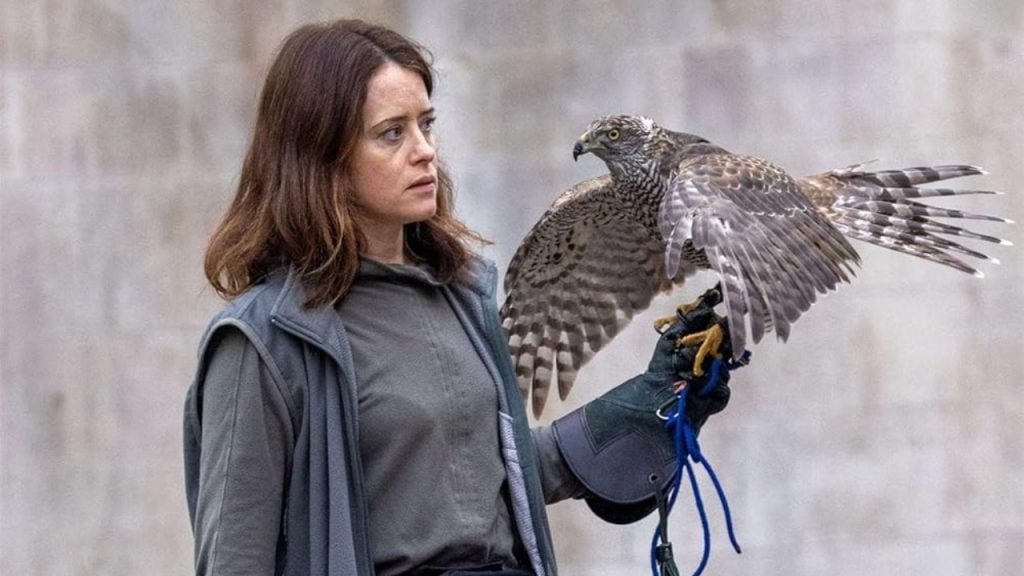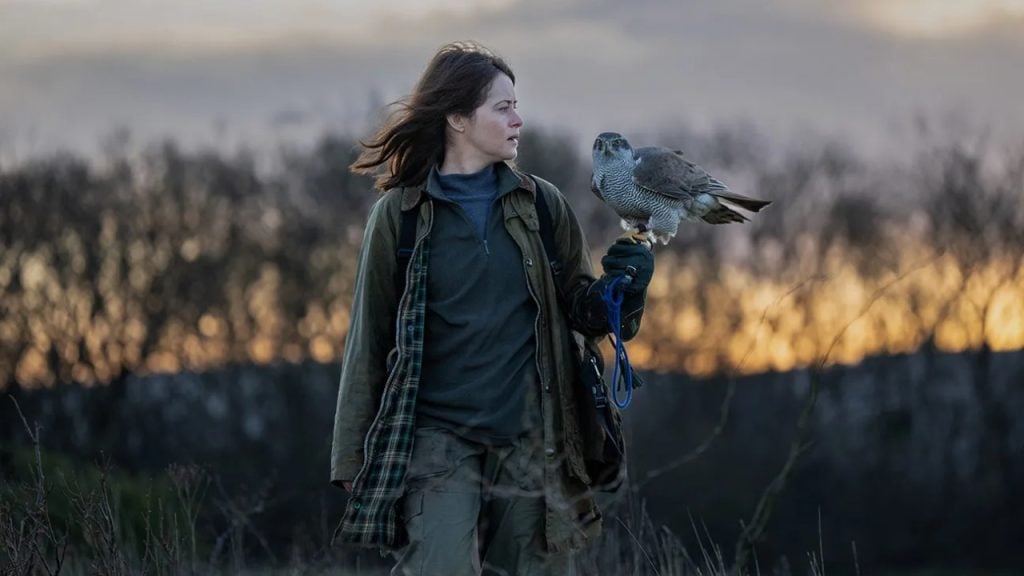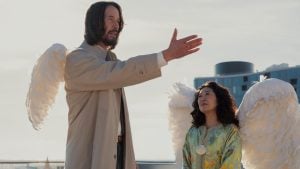Healing isn’t an easy and linear journey. It’s a messy and difficult one you have to undertake, sadly, many times in life. This challenging phase is full of extreme lows, but luckily also some hope, love and strong family bonds. H Is for Hawk embodies this uncomfortable truth, capturing the depth of melancholy while also showing that hope and solace can be found in unexpected place. Philippa Lowthorpe’s (Three Girls) latest movie, which is based on Helen Macdonald’s bestselling memoir, is a wonderful meditation on finding the right balance between vulnerability and strength. However, despite Claire Foy’s heartbreakingly authentic lead performance, the film’s emotional impact is weakened by its drawn-out pacing.
Initially, there’s absolutely no sign of the prolonged story as Lowthorpe and co-writer Emma Donoghue (Room) come straight to the point with the movie’s pivotal loss. After introducing the audience to Cambridge professor Helen (Foy), her father (Brendan Gleeson) and their shared love for photography and hawks, they pull the rug right underneath you. The sudden death of her dad stops Helen right in her tracks. She hero-worshipped her father, and he was the only person who truly understood her. Now she’s left with an immense void that no sympathy can fill. Introducing this death so early on might seem like an unexpected choice, mainly because you instantly feel the warmth and openness of Gleeson’s (In Bruges) portrayal, and to take the away would be highly unbeneficial for this movie.
However, the filmmaker uses wonderful flashbacks to convey genuine emotions and strengthen the tender bond between father and daughter. This allows the audience to get a truly in-depth understanding of Helen’s current emotional journey. It also enables Gleeson to give an endearing performance that makes Helen’s loss even more palpable. Unfortunately, Lowthorpe leans too heavily on those flashbacks, resulting in those, just like the awe-inspiring scenes between Helen and her hawk, becoming too repetitive towards the middle of the film. While the slow and non-linear pacing is the perfect mirror of Helen’s healing process, its effectiveness can’t come true to the fullest due to the overuse of flashbacks. A handful of memories would have definitely evoked the intended emotions and would have enhanced the emotional arc more.
And what an internal emotional journey it is! Grief-stricken and heartbroken, Helen decides to continue pursuing their love for hawks by adopting an Eurasian goshawk. She obviously recognises something of herself in her new feathered companion Mabel. What that is exactly is open to interpretation the entire time. At first, Helen’s all-consuming hobby gets her out of the house and connects her with people curious about her hawk. The film’s authenticity and the connection between Helen and Mabel deepen knowing that Foy trained intensively with the real Mabel. Their growing bond, but also the potential danger a bird of prey can pose, can form a beautiful relationship that’s mesmerising to watch.

However, the more time they spend together, the more the hawk becomes a shield against the crushing heartache the grieving academic is experiencing. Mabel acts more and more like a coping mechanism for Helen to distance herself from her loved ones, friends and even her career, as she deep down doesn’t want to face her own tragedies. Her internal chaotic struggle beautifully comes to life thanks to Charlotte Bruus Christensen’s (The Hunt) visual contrasts. The vast and long shots of Mabel flying over the English countryside offer beauty and joy, and indeed are moments of (emotional) freedom. Those remarkable shots turn both Mabel and the gorgeous landscape into extra characters, giving the movie more depth and radiance. During those scenes, H Is for Hawk becomes less a gruelling path of resilience, patience and self-(re)discovery and more a remarkable nature documentary.
However, when Christensen takes the camera inside the lead’s claustrophobic and messy house, it once again becomes a gripping depiction of someone being in utter distraught. Helen isn’t a person who wallows in her emotions. Having people around her who would constantly ask how she’s doing would only make the situation worse. Therefore, it’s better to avoid social contact altogether.
Because the movie evolves mainly around those two aspects – Helen training Mable and her not wanting to face her darker demons – Lowthorpe shines the brightest spotlight on Foy. While the means that the equally great Lindsay Duncan (About Time) and Josh Dylan (Allied) don’t get a lot of screentime, Foy can show once again her remarkable talent for conveying complex emotions such as grief and despair. Her performance might not be as effective as in All of Us Strangers and First Man due to the long-winded story, but she still grabs your attention for almost the entire runtime. What starts as a full-of-life professor with a bright future slowly turns into a subdued, worn-down woman who carries the immense weight of grief.
While the deliberately slow pace can form a challenge at times, it doesn’t take away the true honesty and authenticity of the story. Foy’s emotionally resonant performance is a genuine depiction of grief, while Gleeson anchors the movie with his tender and engaging acting. All surrounded by a layered and masterful cinematography, the overlong drama becomes a raw portrait of loss, family and the unbreakable connection between human and nature.
H Is for Hawk screened at the BFI London Film Festival, courtesy of Lionsgate UK. No US release date yet.
Foy’s emotionally resonant performance is a genuine depiction of grief, while Gleeson anchors the movie with his tender and engaging acting. All surrounded by a layered and masterful cinematography, the overlong drama becomes a raw portrait of loss, family and the unbreakable connection between human and nature.
-
GVN Rating 7
-
User Ratings (0 Votes)
0







